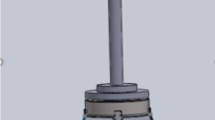Abstract
A virtual fence is created by applying an aversive stimulus to an animal when it approaches a predefined boundary. It is implemented by a small animal-borne computer system with a GPS receiver. This approach allows the implementation of virtual paddocks inside a normal physically-fenced paddock. Since the fence lines are virtual they can be moved by programming to meet the needs of animal or land management. This approach enables us to consider animals as agents with natural mobility that are controllable and to apply a vast body of theory in motion planning. In this paper we describe a herd-animal simulator and physical experiments conducted on a small herd of 10 animals using a Smart Collar. The Smart Collar consists of a GPS, PDA, wireless networking and a sound amplifier. We describe a motion planning algorithm that can move a virtual paddock subject to landscape constraints which is suitable for mustering cows. We present simulation results and data from experiments with 8 cows equipped with Smart Collars.
Access this chapter
Tax calculation will be finalised at checkout
Purchases are for personal use only
Preview
Unable to display preview. Download preview PDF.
Similar content being viewed by others
Author information
Authors and Affiliations
Editor information
Rights and permissions
Copyright information
© 2006 Springer-Verlag Berlin Heidelberg
About this paper
Cite this paper
Butler, Z., Corke, P., Peterson, R., Rus, D. (2006). Dynamic Virtual Fences for Controlling Cows. In: Ang, M.H., Khatib, O. (eds) Experimental Robotics IX. Springer Tracts in Advanced Robotics, vol 21. Springer, Berlin, Heidelberg. https://doi.org/10.1007/11552246_49
Download citation
DOI: https://doi.org/10.1007/11552246_49
Published:
Publisher Name: Springer, Berlin, Heidelberg
Print ISBN: 978-3-540-28816-9
Online ISBN: 978-3-540-33014-1
eBook Packages: EngineeringEngineering (R0)




